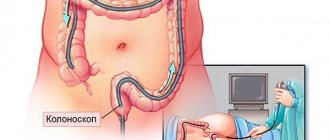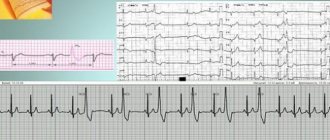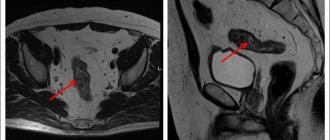Cancer is a disease that is caused by cell mutation. Cancer cells differ from healthy cells in that their cell cycle does not work properly. A healthy cell has several cycle stages:
- division;
- height;
- maturation;
- aging;
- dying off.
Cancer cells also divide, only at a faster rate. In addition, they may not die, forming clusters or tumors. They can form in the body of any person. But the general condition of the body and immunity plays a big role, since it depends on whether the body can independently overcome the development of the disease.
Types of cancer
Affected cells can occur in any human organ. Therefore, cancer can be called a group of diseases. The specific definition of the disease depends on which organs are affected:
- if the hematopoietic system is affected, it is leukemia;
- if the lymphatic system is affected, it is lymphoma;
- if nervous, connective or supporting tissue is affected, it is sarcoma;
- if the epithelial tissue of an organ is affected, it is carcinoma;
- if the skin is affected, it is melanoma.
There are also other types of cancer such as teratoma, glioma, choriocarcinoma, blastoma. Some types of cancer are less common, some more common. But this is the danger of rare species - they have not been studied so well, so they often lead to death.
Why is cancer called cancer? Lost in translation
Returning to Hippocrates, it is worth mentioning that when studying neoplasm, he took the term “carcinoma” and described it using the association with a crab. The spreading inflammation with its interweaving of veins, size, shape, and color reminded him of this arthropod.
When translating the ancient Greek word "karkinos" into Latin, the Roman physician and philosopher Aulus Cornelius Celsus used the imprecise term "cancer" (cancer), which has entered many languages. Modern medicine uses the Latin word “cancer” to classify cancerous tumors.
How does cancer occur?
As mentioned above, cancer is nothing more than a malfunction of the cellular structure. Each cell of the body has a Heflick limit - this is a certain number of divisions that a cell can make, after which it dies. Due to a number of reasons, a cell may lose this limitation. Therefore, it begins to divide randomly and does not die.
As for fission, a certain amount of energy is spent on it. And if division occurs constantly, then more energy is expended. Because of this, the cell ceases to perform the functions that were originally assigned to it and becomes cancerous.
Cancers are also called malignant tumors. Their difference from benign ones is that the former, although they lose the Heflick limit, do not cease to perform their functions and do not change their structure. And in malignant tumors, cells change in structure and degree of development. Because of this, they can grow into other organs.
Classification and prognosis
To classify malignant neoplasms, the following characteristics are necessary:
- morphology and structure of a malignant tumor;
- localization of the main focus;
- tumor size and rate of growth;
- predisposition to metastases.
International classification depends on the prognosis of cancer development by stages, which are determined by:
- prevalence of the primary lesion (T);
- local lymph reaction (N);
- the presence or absence of distant metastases (M).
Additionally, all tumor processes are classified according to different parameters:
- according to clinical signs;
- according to the pathomorphological features of the neoplasm from histological examination;
- by histopathological differentiation.
What are the symptoms of cancer?
Oncological diseases in their initial stages affect one organ. But since the affected cells have the ability to rapidly divide, the disease affects not only the functioning of a particular organ or organ system, but also the body as a whole.
General symptoms of the disease:
- deterioration of the person’s general condition – appetite decreases, the person loses weight, feels weak;
- anemia – the color of the skin changes to paler, dizziness and fainting are observed;
- immunity decreases as the body fights cancer cells, which is why it cannot resist other infections and viruses;
- pain occurs, but this symptom appears in later stages of cancer;
- in case of serious diseases, liver function is disrupted, which is why the skin may turn yellow;
- inflammatory processes that are accompanied by high temperature;
- lymph nodes enlarge, as they are responsible for cleansing the body, but this symptom can occur both on the first and second
- last stage of cancer.
Not all cancers are malignant
Oncology is a branch of medicine that studies malignant and benign tumors, methods of their diagnosis, prevention, and treatment.
For the first time, the term “oncos”, which means “bloating”, “bubble”, “swelling”, was used by the ancient Greek physician Hippocrates, describing tumors. The healer was able to isolate and identify similar common features in a number of similar diseases. Later, the ancient Roman physician Claudius Galen used this term to refer to neoplasms of any nature. It was his works that gave rise to the modern discipline that studies cell transformation and the process of tumor formation.
What are the causes of oncology?
In all the years of cancer research, the exact causes of this disease have not been identified. But oncological diseases have a fairly high connection with a number of factors called carcinogens (from the Latin cancer - cancer). These factors can be divided into several groups:
- Genetic. Research shows that a cell's DNA may contain certain defects that could cause that cell to lose its Heflick limit. Therefore, people whose relatives have had cancer are predisposed to this disease.
- Infectious. This group includes some viruses, against the background of which a disruption in the functioning of the body may occur. For example, the human papillomavirus can cause cervical cancer, herpes - various types of lymphomas, hepatitis B and C - liver cancer. This is due to the fact that these viruses “integrate” their genes into cellular DNA during their development.
- Chemical. This group consists of a number of substances that, when ingested, can penetrate the cell nucleus. This can cause DNA to interact with these substances.
- Physical. This group includes different types of radiation (ultraviolet, x-ray). They can destroy the shell of cell atoms, which leads to disruption of the structure of molecules and destruction of the DNA sector that is responsible for the Heflick limit.
- Hormonal. Due to hormonal disorders (excess or lack of hormones), the functioning of the endocrine glands is disrupted. Such changes in the body can lead to cancer of the mammary glands, prostate gland, thyroid gland and others.
- Immunological. This group of factors includes a decrease in the activity of T-leukocytes, which are responsible for fighting diseased cells that differ in structure from healthy ones.
Prostate cancer, testicular cancer, breast cancer, cervical cancer, thyroid cancer, lung cancer, stomach cancer, blood cancer.
Prostate cancer
Prostate cancer begins in the cells of the prostate gland. It is the most common form of cancer in men and is often diagnosed after the age of 65. Men who have a family history of prostate cancer are at greater risk of developing it at a young age.
What can you do
If you are 50 years or older, talk to your doctor about the risks and benefits of prostate cancer screening.
If you are at high risk for prostate cancer due to your family history or African ancestry, discuss starting screenings at a younger age.
The following tests may be used to detect prostate cancer early:
- digital rectal examination (DRE): physical examination of the prostate gland through the rectum. The doctor inserts a gloved finger into the rectum to check the prostate for tumors or other unusual findings.
- prostate-specific antigen (PSA) test: a blood test that measures prostate-specific antigen, a substance that the prostate secretes.
PSA and DRE tests can help detect prostate cancer at an early stage, but they can also cause a false alarm or miss the presence of prostate cancer. In some cases, these tests can detect prostate cancer that may not pose a serious threat to your health. It is important to consult with your doctor about your personal risk of prostate cancer and the benefits and risks of screening.
What to pay attention to
These signs and symptoms may be caused by prostate cancer or other health problems such as inflammation or enlargement of the prostate.
Check with your doctor if you experience the following symptoms:
- the need to urinate frequently, especially at night;
- urgent need to urinate,
- difficulty starting or stopping a stream of urine;
- inability to urinate
- weak, reduced, or intermittent urine stream;
- a feeling that the bladder has not completely emptied;
- burning or pain when urinating;
- blood in urine or semen;
- painful ejaculation.
Testicular cancer
Testicular cancer begins in the cells of the testicle. Although testicular cancer is rare, men between the ages of 15 and 49 have an increased risk of developing it. Testicular cancer is usually curable, especially if it is detected early.
What can you do
Know what your testicles look like and have them checked regularly. It is best to do this after a warm bath or shower, when the testicles descend and the scrotal muscles relax. Contact your doctor immediately if you notice anything unusual.
Get regular medical exams from your doctor, including a testicular exam.
What to pay attention to
These signs and symptoms may be caused by testicular cancer or other health problems.
Contact your doctor if you experience any of the following:
- tumor on the testicle;
- painful testicle;
- a feeling of heaviness or dragging in the lower abdomen or scrotum;
- dull pain in the lower abdomen and groin.
Source: Canadian Cancer Society, 2008
Mammary cancer
Breast cancer begins in the cells of the breast tissue. Women's breast tissue covers an area larger than the breast itself. It extends to the collarbone and from under the armpit to the sternum in the center of the chest.
Breast cancer is a diagnosed form of cancer in women. It can also occur in men, but is very rare.
Breast cancer can occur at any age, but most cases occur in women over 50. Many women are alive and well because breast cancer was detected early and treated.
What can you do
The most reliable tests for detecting breast cancer at an early stage are:
- Mammography is an X-ray examination of the mammary glands with a low dose of radiation.
- A clinical breast examination (CBE) is a physical examination of the breasts by a qualified healthcare professional.
What to do if you:
- Age 40 or older - Get a clinical breast examination by a qualified healthcare professional at least every 2 years.
- Ages 50 to 69: Get a mammogram every 2 years.
- Age 70 or older—Talk to your doctor about how often you should be tested for breast cancer.
Some women have a higher than average risk of developing breast cancer. Talk to your doctor about your personal risk and create a personalized testing plan.
It may be appropriate to start testing earlier or test more frequently if:
- you have already had breast cancer;
- your breast biopsy showed certain changes in your breasts, such as an increase in the number of abnormal cells that are not cancerous (atypical hyperplasia);
- You have a family history of breast cancer (especially if your mother, sister, or daughter was diagnosed with breast cancer before menopause, or if there are inherited mutations in certain genes, such as BRCA1 or BRCA2.
You also know how normal your breasts look, so you can notice any changes even if you get tested regularly.
Remember that the condition in your breasts may be different at different points in the menstrual cycle. They may become lumpy just before the start of menstruation. Breast tissue also changes with age. Knowing what is normal for you will help you determine which changes you should consult with your doctor about.
What to pay attention to
For most women, finding a lump in the breast is the most common sign of breast cancer. If it is tender, it is usually a symptom of a benign tumor, but this should be checked by a doctor.
Most lumps are not cancerous. These signs and symptoms may be caused by breast cancer or another breast problem.
Check with your doctor if you experience the following symptoms:
- the appearance of a lump or swelling under the armpit;
- changes in breast size or shape;
- the appearance of pitting or wrinkles in the skin - this is sometimes called “skin like the skin of an orange”;
- redness, swelling, or a feeling of increased warmth in the affected breast
- formation of an involved nipple when the nipple is directed towards the middle;
- crusting or peeling of the nipple.
Cervical cancer
Cervical cancer begins in the cells of the cervix. It usually grows very slowly. Before cervical cancer develops, the cells in the cervix begin to change and become abnormal. These abnormal cells are called precancerous cells, i.e. they are not cancer. Precancerous changes in the cervix are called cervical dysplasia.
Cervical dysplasia and cervical cancer often do not cause any symptoms in their early stages. Regular testing can help detect cervical dysplasia or cancer before symptoms appear. As a rule, both diseases are successfully treated if they are diagnosed early.
The risk of cervical cancer increases if you started having sex early or have had many sexual partners.
These factors increase your risk of contracting human papillomavirus (HPV). HPV is a group of viruses that can be easily transmitted from person to person through sexual contact. HPV infections are common and usually go away without treatment as the immune system rids the body of the virus. Only certain types of HPV can cause changes in the cells of the cervix, which can lead to cervical cancer.
What can you do
Once you become sexually active, have a Pap test every 1-3 years. A Pap smear is a laboratory test of cells taken from the cervix to look for changes. This test detects changes early, before cancer develops.
Continue to have Pap tests even after you stop having sex.
Talk to your doctor about continuing smear tests if you have had a hysterectomy (removal of the uterus, cervix and sometimes ovaries).
When you have a Pap Test, you may also be able to arrange a pelvic examination. This is a physical examination of the pelvic organs through the vagina. The doctor inserts a gloved finger through the vagina to check the cervix and pelvis for any unusual findings. This is not a test for cervical cancer, but it may detect other problems.
Use a condom during sex to increase your chances of avoiding HPV infection.
Consider getting vaccinated against HPV if you are between 9 and 26 years of age. It protects against certain HPV infections, which cause more than 70% of cervical cancers and most types of genital warts.
What to pay attention to
These signs and symptoms may be caused by cervical cancer or other health problems.
Contact your doctor if you experience any of the following:
- abnormal bleeding or bloody vaginal discharge between periods;
- unusually long or heavy menstrual periods;
- bleeding after sexual intercourse;
- pain during intercourse;
- watery vaginal discharge;
- increased amount of vaginal discharge;
- vaginal bleeding after menopause.
Source: Canadian Cancer Society, 2008
Skin cancer
Skin cancer is a fairly common disease, affecting about 1 million people worldwide every year. Check the condition of your skin regularly. Review your skin's normal condition and report any changes to your doctor.
What to pay attention to:
The following signs and symptoms may be caused by skin cancer or other skin problems.
Contact your doctor if you experience the following symptoms:
- changes in the shape, color or size of moles or warts;
- ulcers do not heal;
- areas of skin that bleed or itch, or become red and ridged.
The main types of skin cancer are:
Squamous cell carcinoma
This type of cancer usually affects the skin of the face, concentrated mainly around the mouth or on the surface of the ears. This is initially a small lump on the skin, which gradually turns into a small red spot with a scaly structure. After some time, if left untreated, the disease may begin to spread further, covering more and more areas of the skin. Without treatment, squamous cell carcinoma is fatal.
Basal cell carcinoma
This type of skin cancer is probably the most common. At the initial stage there is a slight compaction. Most often localized on the neck, head or hands. After some time, the affected area of the skin may begin to bleed, then false healing begins with the formation of a crust, and again gives way to bleeding. As basal cell carcinoma grows, it affects not only the surface of the skin, but also goes deeper. It spreads somewhat more slowly than squamous cell carcinoma. Can cover a large area.
Malignant melanoma
This type of skin cancer is the most dangerous of all the above. There is a small chance of curing it, but only at an early stage of the disease. Typically, melanoma is localized on age spots, moles, or in close proximity to them. Gradually growing, melanoma becomes convex, sometimes changes color and begins to bleed. In addition, the person suffers from unbearable itching in the affected area. Now this is a very common disease, approximately every 10 years the number of patients increases by 1.5-2 times. Of course, we cannot say that only ultraviolet radiation is to blame for this. The formation of melanoma is influenced by many factors: ultraviolet rays, hormonal, genetic, environmental, endocrine and other factors.
Skin melanoma in 80% of cases begins to develop from a mole. If a person has melanosis - excess skin pigmentation, this increases the risk of developing melanoma several times. Very often, these two diseases occur against the background of one another. Doctors believe that moles are a weak point, a kind of break in the body. There are many cases when moles begin to degenerate for seemingly inexplicable reasons.
Moles are pigmented formations on the surface of the skin that are congenital or acquired. Moles most often appear in the form of a pea or a dark brown spot. They can be flat or protrude above the surface of the skin; hair often grows from moles.
Usually moles do not cause any inconvenience to their owner, since they are a benign neoplasm. They arise due to disruption of the synthesis and metabolism of melanin. Moles can appear both in childhood and in adulthood. According to doctors' observations, a person is born practically without moles; they appear in the first year of life or later. In addition, some moles may disappear.
The growth of moles, in addition to ultraviolet rays, can be triggered by massage, trauma, hormonal treatment and many other reasons. If a mole is regularly exposed to ultraviolet rays, it will sooner or later begin to degenerate into melanoma. The most dangerous in this regard are moles located on the feet and palms, since they most often degenerate into melanoma.
Any person should immediately be alert to the following changes in moles:
- the appearance of a new pigment spot or mole;
- change in the appearance of a mole (color, shape, size);
- the edges of the mole have become jagged;
- the surface of the mole has become heterogeneous;
- the mole has acquired a scaly structure, begins to bleed, or becomes inflamed.
Diseases can be prevented by removing the mole. Only highly qualified doctors can do this.
It is strictly forbidden to remove a mole yourself. This can cause even more harm to your health.
After identifying changes occurring with the mole, you must immediately stop any contact of the damaged area of the skin with the sun's rays; sunbathing is prohibited. You need to see a doctor as soon as possible.
Before deciding to remove a mole, consultation with an oncodermatologist and dermatologist is necessary. After the necessary operation to remove a mole, a number of histological studies are needed to monitor the removed tissues. There is no universal way to remove moles. The main methods of removing moles are electrocoagulation, cryodestruction, laser removal, and surgery. In each individual case, this issue is resolved individually. In some cases, it is necessary to remove not only the mole itself, but also the healthy skin around it.
Thyroid cancer
Thyroid cancer (thyroid gland) is a malignant tumor, the cells of which have such properties as uncontrolled growth and the ability to grow over time into nearby organs with disruption of the functions of these organs (trachea, larynx, internal jugular vein, carotid arteries).
Tumors of the thyroid gland are considered dishormonal. They occur against the background of decreased thyroid function, which is caused by iodine deficiency, taking antithyroid drugs, exposure to ionizing radiation, and the genetic role of the cause of cancer has also been demonstrated.
The disease begins with the appearance of a nodule in the thyroid gland. The knot is usually of a densely elastic consistency and quickly increases in size.
The appearance of enlarged lymph nodes on the lateral surfaces of the neck indicates the presence of metastases in them. There may be a sensation of lumps in the throat, compression in the thyroid gland, hoarseness, shortness of breath, pain in the thyroid gland and neck.
If you find at least one of the above symptoms, you should contact an endocrinologist or oncologist directly.
It is mandatory to perform an ultrasound examination of the thyroid gland and neck with a puncture biopsy of the thyroid nodule followed by a cytological examination of cells from the thyroid nodule, which allows confirming the diagnosis of thyroid cancer or excluding it. If thyroid cancer is suspected, surgical treatment is indicated.
Surgical treatment consists of complete removal of the thyroid gland. Only if the disease is detected at an early stage is it possible to remove only one thyroid gland affected by the tumor.
Radiation therapy is used after surgical treatment (total removal of the thyroid gland) with the goal of completely destroying all thyroid cells. Suppressive hormone therapy with levothyroxine is prescribed for life.
The main preventive measure for thyroid cancer is ultrasound examination of the gland, which must be performed at least once every 2 years, and even better, given the prevalence of this disease, this simple examination should be done annually!
Lungs' cancer
Lung cancer is a group of malignant lung tumors that arise from cells lining the bronchi or the lungs themselves. These tumors are characterized by rapid growth and early metastasis.
Men suffer from lung cancer 7-10 times more often than women, and the incidence increases in proportion to age. In men aged 60-69 years, the incidence rate is 60 times higher than in men aged 30-39 years.
Causes
The actual mechanisms of transformation of normal cells into cancer cells are not yet fully understood. However, thanks to scientific research, it has become clear that there is a whole group of chemicals that have the ability to cause malignant degeneration of cells. Such substances are called carcinogens.
The main cause of lung cancer is inhalation of carcinogens. About 90% of all cases of diseases associated with smoking, namely with the action of carcinogens contained in tobacco smoke.
In addition, air pollution is directly related to lung cancer. For example, in industrial areas with mining and processing industries, people suffer from lung cancer 3-4 times more often than in remote villages. .
There are other risk factors for lung cancer:
- contact with asbestos, radon, arsenic, nickel, cadmium, chromium, chlormethyl ether;
- radioactive exposure;
- chronic lung diseases: pneumonia, bronchitis, bronchiectasis, tuberculosis.
What's happening?
Cancer cells quickly divide and the tumor begins to increase in size. If left untreated, it grows into neighboring organs (heart, large vessels, esophagus, spine), causing their damage.
Together with blood and lymph, cancer cells spread throughout the body, forming new tumor nodes (metastases). Most often, metastases develop in the lymph nodes, other lung, liver, brain, bones, adrenal glands and kidneys.
How to recognize?
Experienced smokers, be careful! A constant cough, bloody sputum, chest pain, as well as recurring pneumonia and bronchitis are not just unpleasant symptoms. It is possible that a serious disease process is developing in your lungs - lung cancer
Diagnostics
Unfortunately, most patients turn to doctors in the late stages of lung cancer. Therefore, it is very important to regularly undergo preventive examinations, do fluorography and consult a general practitioner, or even better, a pulmonologist, for any symptoms of pulmonary diseases that last more than 3 days.
A reliable way to detect lung cancer is to take a chest x-ray. To clarify the diagnosis, endoscopic bronchography is used, which allows you to find out the composition of the tumor and its size, as well as do a biopsy - take a piece of tissue for cytological examination.
Treatment
An oncologist treats patients with lung cancer. The doctor chooses the treatment method depending on the stage of the cancer, the type of malignant cells, the characteristics of the tumor, the presence of metastases, etc.
Usually, to rid a patient of a disease, a combination of three methods is used: surgery, medication and radiation.
Surgical treatment for lung cancer involves removing the tumor along with part of the lung. If necessary, damaged lymph nodes are also removed.
The success of treatment depends on the patient’s age and the correct selection of therapy.
If treatment was started in the early stages of the disease, 45-60% of patients have a chance to fully recover, and 90% have a chance to live at least another five years. If the disease is discovered too late, when metastases have already appeared, there are no guarantees.
Source ; www.medportal.ru
Stomach cancer
Gastric cancer is a malignant tumor growing from the epithelial cells of the mucous (inner) lining of the stomach. The tumor can occur in different parts of the stomach: in the upper part where it connects to the esophagus, in the main part of the stomach or in the lower part where the stomach connects to the duodenum.
The risk of developing stomach cancer increases in both men and women after 50 years of age, but in the stronger sex this probability is twice as high.
Causes
It is known that a normal cell transforms into a cancerous one if a certain mutation (defect) occurs in its chromosomes. But what exactly causes this mutation in stomach cancer?
Despite all the advances of medicine in the study of cancer, the cause of malignant degeneration of stomach cells still remains unclear. At the moment, only a group of risk factors has been identified that, under unfavorable circumstances, can provoke this serious disease.
Risk factors for developing stomach cancer:
- Hereditary predisposition - if someone in the family is diagnosed with stomach cancer, all other close relatives have a 20% increased chance of getting the disease;
- Dietary features - excessive consumption of smoked, spicy, salted, fried (overcooked) and canned foods, consumption of foods that are stored for a long time, containing nitrates, significantly increases the likelihood of stomach cancer;
- Long-term stomach diseases: gastritis (low acidity), ulcers and stomach polyps; — gastric surgery increases the risk of developing stomach cancer by 2.5 times;
- Presence of the bacterium Helicobacter pylori in the stomach: in 1994, the World Health Organization (WHO) recognized the connection between Helicobacter pylori and stomach cancer and classified this bacterium as a class 1 carcinogen;
- Working with asbestos and nickel;
- Deficiency of vitamins B12 and C;
- Primary and secondary (for example, AIDS) immunodeficiencies;
- Stomach cancer is 20 times more common in patients with pernicious (malignant) anemia;
- Some viruses, in particular the Epstein-Barr virus;
- Alcoholism;
- Smoking.
What's happening?
It has now been proven that in a completely healthy stomach, cancer practically does not occur. It is preceded by a so-called precancerous condition - a change in the properties of the cells lining the stomach. Most often this happens with chronic gastritis with low acidity, ulcers and stomach polyps.
On average, it takes 10 to 20 years from precancer to cancer. At the initial stage of cancer, a small tumor less than 2 cm in size appears in the stomach. Gradually it increases, grows in depth (it grows through all layers of the stomach wall) and in width (spreads over the surface of the stomach). A stomach tumor can interfere with digestion. If it is located on the border with the duodenum, it will prevent the passage of food into the intestines. Located near the esophagus, stomach cancer will prevent food from entering the stomach. As a result, the person begins to lose weight sharply. Growing into the wall of the stomach, the tumor spreads to other organs: the colon, small intestine, pancreas, retroperitoneum.
Stomach cancer is prone to the early appearance of a large number of metastases: some cancer cells separate from the original tumor and spread through the body (for example, along with the blood and lymph flow), forming new tumor nodes (metastases). In gastric cancer, metastases most often affect the lymph nodes and liver. In addition, the ovaries, fatty tissue, peritoneum, navel, bones, lungs, etc. can be affected. As a result, the functioning of all damaged organs is disrupted, which ultimately leads to death.
How does it manifest?
Small tumors often remain asymptomatic.
Only in some cases may patients experience:
- Decreased appetite;
- Change in food preferences: for example, they have an aversion to meat, fish, etc.;
- Increase in temperature (usually not higher than 37-38 ° C);
- Anemia (decreased hemoglobin).
As stomach cancer grows, new symptoms appear:
- Feeling of heaviness in the stomach after eating, nausea and vomiting, rapid satiety;
- Diarrhea, constipation;
- Pain in the upper abdomen;
- Pain radiating to the back (when the tumor spreads to the pancreas);
- An increase in the size of the abdomen, accumulation of fluid in the abdominal cavity (ascites);
- Weight loss;
- If the tumor destroys blood vessels, gastrointestinal bleeding may develop.
Diagnostics
The earlier the diagnosis is made, the more successful the treatment of the disease will be. At the slightest suspicion of stomach cancer, and in general for any digestive problems, immediately seek help from a gastroenterologist.
The main method of examining the stomach is gastroscopy. During gastroscopy, the doctor assesses the condition of the gastric mucosa and performs a biopsy of the most suspicious areas. Histological examination of the material obtained during biopsy allows us to answer the question: is the tumor benign or malignant?
Additional methods are used:
- X-ray examination of the digestive tract;
- Computed tomography,
- Ultrasound of the abdominal organs;
- General and biochemical blood tests (can detect anemia and protein metabolism disorders in the patient’s body) and others.
Treatment
The success of treatment for stomach cancer directly depends on the size and spread of the tumor to neighboring organs and tissues, as well as the presence of metastases.
The main method of treatment is surgical, which involves removing the tumor along with the stomach (gastrectomy) or part of it. In some cases, in addition to the stomach, the spleen, part of the liver or intestines are removed. After surgery, chemotherapy or radiation therapy may be prescribed.
Source: - www.medportal.ru
Blood cancer
Blood cancer is a whole group of tumor diseases of hematopoietic tissue. What we are accustomed to consider “blood cancer”, oncologists call “hemoblastosis”. In the event that cancer cells occupy the bone marrow (the place where blood cells are formed and mature), hemoblastoses are called leukemia. If tumor cells multiply outside the bone marrow, we are talking about hematosarcoma.
Leukemia (leukemia) is also not one disease, but several. All of them are characterized by transformation of the type of hematopoietic cells into malignant ones. In this case, cancer cells begin to multiply and replace normal bone marrow and blood cells.
Depending on which blood cells have turned cancerous, there are several types of leukemia.
For example, lymphocytic leukemia is a defect of lymphocytes, myeloid leukemia is a violation of the normal maturation of granulocytic leukocytes.
All leukemias are divided into acute and chronic.
Acute leukemia is caused by the uncontrolled growth of young (immature) blood cells.
With chronic leukemia, the number of more mature cells sharply increases in the blood, lymph nodes, spleen and liver. Acute leukemia is much more severe than chronic leukemia and requires immediate treatment. .
Causes
For a person to develop leukemia, it is enough for one single hematopoietic cell to mutate into cancer. It begins to divide rapidly and gives rise to a clone of tumor cells. Cancer cells quickly divide, gradually take the place of normal ones, and leukemia develops.
Possible causes of mutations in the chromosomes of normal cells are as follows:
1. Effect of ionizing radiation. 2. Carcinogens. These include some medications (butadione, chloramphenicol, cytostatics (antitumor)), as well as some chemicals (pesticides, benzene, petroleum distillation products that are part of varnishes and paints). 3. Heredity. This mainly applies to chronic leukemia, but in families where there were patients with acute leukemia, the risk of getting sick increases 3-4 times. It is believed that it is not the disease that is inherited, but the tendency of cells to mutate. 4. Viruses. There is an assumption that there are special types of viruses that, when integrated into human DNA, can transform a normal blood cell into a malignant one. 5. The occurrence of leukemia to a certain extent depends on the race of a person and the geographic area of his residence.
How to recognize?
It is unlikely that you will be able to diagnose yourself with leukemia, but you definitely need to pay attention to changes in your well-being.
Keep in mind that acute leukemia is accompanied by high fever, weakness, dizziness, pain in the limbs, and the development of severe bleeding.
This disease can be accompanied by various infectious complications: ulcerative stomatitis, necrotizing tonsillitis.
There may also be enlargement of the lymph nodes, liver and spleen.
Chronic leukemia is characterized by increased fatigue, weakness, poor appetite, and weight loss. The spleen and liver enlarge. At a late stage of the disease, infectious complications and a tendency to thrombosis occur.
Diagnostics
In most cases, the diagnosis of blood cancer cannot be made on the basis of a general and biochemical blood test. To confirm the diagnosis of blood cancer, it is also necessary to conduct a bone marrow examination (puncture, trepanobiopsy).
Treatment
To treat acute leukemia, a combination of several antitumor drugs and large doses of glucocorticoid hormones is used. In some cases, a bone marrow transplant is possible. Supportive measures are extremely important - transfusion of blood components and rapid treatment of infection, the likelihood of which is very high in leukemia.
For chronic leukemia, so-called antimetabolites are currently used - drugs that suppress the growth of malignant cells.
In addition, radiation therapy or the injection of radioactive substances such as radioactive phosphorus are sometimes used. The doctor chooses the treatment method depending on the form of leukemia. The patient's condition is monitored using blood tests and bone marrow tests. You often have to be treated for leukemia for the rest of your life.
Sources; www.medportal.ru, https://stopcancer.org.ua
Read also:
- Oncology will be detected by SCREEN
- Self-examination
- Mole care
- Traumatized mole
- Moles
- Treatment of melanoma
- Diagnosis of melanoma
- Is it possible to detect melanoma in its early stages?
- Can melanoma be prevented?
- What are the causes of melanoma
- Risk factors for melanoma
- How common is melanoma?
- Skin cancer
- WHO. Cancers caused by environmental factors
- Sunburn. Symptoms, prevention, treatment
- The Ministry of Health of the Republic of Kazakhstan will develop a program to combat oncology
- February 4 is World Cancer Day
- How to detect cancer early
- WHO. Cancer Prevention
- September 15 is World Lymphoma Awareness Day
- Chief oncologist of the Ministry of Health: some types of cancer develop unnoticed
- Carcinogens that can cause tumors to develop in the body
- Consultation with a specialist. Ways to help reduce the risk of developing malignant tumors
- In 2021, a number of events will be held in Crimea to inform the population about the incidence of cancer
- Crimean Oncology Center will join the European Week of Early Diagnosis of Head and Neck Cancer in Russia
- Oncologists of Astrakhan and the Republic of Crimea signed a cooperation agreement
- Oncocardiology - a new integral specialty
- In Crimea, 56.4% of cancer patients have been registered for five or more years
Methods of treating oncopathologies
Cancer is a serious disease, and when patients hear this diagnosis, they often immediately judge themselves. But cancer research is moving forward. Therefore, now we cannot say that this is a disease that necessarily leads to death.
There are several paths to recovery, the first of which is surgical. The tumor is removed to prevent diseased cells from continuing to grow. At the first stage of cancer development, surgical intervention can completely eliminate the further development of pathology.
Chemotherapy
– This is treatment with drugs that suppress the functioning of cancer cells. This causes them to stop dividing and the tumor stops growing.
Irradiation
is a type of treatment that uses high-energy rays that kill diseased cells. Used in conjunction with surgery and chemotherapy.
Hormonal treatment
used if the mammary glands are affected. This treatment suppresses the increase in the number of diseased cells.
Immunotherapy is also used
, during which the body’s immunity is stimulated to work. Through this treatment, the cells are destroyed by antibodies.
In addition, there is treatment with inhibitors that interact with proteins of diseased cells, causing them to stop dividing. Oncology treatment is individualized, and several methods are almost always used together.
The Clinic of Dr. Paramonov employs highly qualified oncologists and uses advanced methods and developments in the treatment of oncological pathologies. You can make an appointment with an oncologist by phone.
Stages of malignant neoplasms
Based on the degree of aggressiveness of the disease and its spread throughout the body, there are 4 stages of malignant neoplasms.
Let's look at the signs of each of them:
- Stage 1 - the appearance of the first malignant cells, transformed from normal ones. The size of the pathological formation in diameter does not exceed 2 cm. It is difficult to diagnose and occurs without obvious symptoms. It responds well to treatment, in 95% of cases patients recover completely.
- Stage 2 - the tumor has already reached 5 cm, but metastases are rarely detected (individual malignant cells in the bloodstream or lymph nodes are possible). The patient’s general health is deteriorating, so one can suspect the disease and undergo the necessary examination in a timely manner. Successful treatment is achieved in 75% of cases.
- Stage 3 - the pathological formation enters the active growth phase and exceeds 5 cm in size. It affects neighboring tissues and organs, quickly spreading through the lymphatic and circulatory systems. Metastases are found in different areas of the body, which can be single or located in groups. The symptoms are pronounced, the functioning of the whole body is disrupted. Depending on the type of oncology, 25-50% of patients achieve success in treatment.
- Stage 4 - extensive damage by malignant cells, numerous and distantly located metastases that occur very quickly, despite the treatment. Therapy is aimed at maximizing the patient's life and relieving symptoms.
The stages of malignant neoplasms are determined after a thorough examination and consultation with an oncologist.
How are oncological pathologies diagnosed?
Unfortunately, in the early stages, in the vast majority of cases, cancer and other oncopathologies do not manifest themselves clinically. But it is precisely the initial stage of the tumor that is one of the main factors in its complete cure. This means that preventive examinations are of utmost importance here, and such early diagnosis can literally save the patient’s life.
Of the methods for detecting tumors, the most informative are various techniques for visualizing the internal structure of organs and tissues:
- radiography;
- computer, magnetic resonance and positron emission (combined with computer or magnetic resonance) tomography;
- ultrasound examinations, etc.
Laboratory tests are also of some importance. And the diagnosis is confirmed using a biopsy - taking biological material from a suspicious area and then examining it under a microscope. This technique gives an unambiguous answer about the nature of the detected neoplasm.
On a note
- What patients call cancer in medical language means an oncological disease or malignant tumor. It is a collection of abnormal, abnormal cells that divide uncontrollably and refuse to die.
- In the medical community, “cancer” is only carcinoma, a malignant tumor of epithelial tissue. Other malignant tumors include sarcoma, melanoma, leukemia and lymphoma.
- Once tumor cells gain access to nutrients and begin to grow into neighboring tissues, it is considered malignant.
- Over time, cells appear in it that can suppress the immune system and cells that form metastases. Therefore, cancer is not easy to treat.
- You can protect yourself from cancer by taking preventative measures, such as quitting smoking and protecting yourself from ultraviolet radiation. And regular medical examinations will help diagnose malignancy at an early stage: then it is easier to cure.
In the next article, Atlas will tell you in detail how to reduce the risks of developing malignant neoplasms, and will also give instructions on when and what examinations to undergo in order to protect yourself.
How healthy cells and tissues are renewed
All human organs and tissues are made of cells.
They have the same DNA, but take different forms and perform different functions. Some cells fight bacteria, others transport nutrients, others protect us from the effects of the external environment, others make up organs and tissues. At the same time, almost all cells are renewed so that the human body grows, functions and recovers from damage. Cell renewal is regulated by growth factors. These are proteins that bind to receptors on the cell membrane and stimulate the division process. When a new cell separates from its parent, a cascade of reactions is launched in it, and it becomes specialized - differentiated. After differentiation, only those genes that determine its shape and purpose are active in the cell. We can say that now the cell has personal instructions on what and how to do.
All tissues renew themselves at different rates. The cells of the central nervous system and the lens of the eye do not divide at all, and the epithelial cells of the small intestine are completely replaced every 4-5 days. Tissues that are constantly renewed contain a layer of stem cells. These cells have no specialization, but can only divide and create either a copy of themselves without specialization, or a differentiated cell of the tissue in which they are located.
New cells replace damaged old ones. The damaged cell “understands” that it will no longer bring benefit to the body, and launches a death program - apoptosis: the cell commits voluntary suicide and gives way to a healthy one.
Risk factors
All types of cancer arise in the body under the influence of certain factors. The development of cancer mainly depends on lifestyle. Improper nutrition with low-quality foods high in carcinogens causes the development of malignant tumors. Excessive alcohol consumption and smoking are also factors in the development of cancer, as well as working in hazardous industries and enterprises where the body accumulates toxic substances.
Heredity also influences the presence of cancer cells in the body. Pathological processes in cells can occur after their mutation in the prenatal period and during the development of the body. Thus, some types of cancer develop in newborns along with the growth of body tissues.
Poor ecology and high levels of radiation are also causes of cancer.
Degree of tumor malignancy
The success of the chosen therapy, the likelihood of relapses and the chances of remission depend on how aggressively the affected cells behave. Because of this, experts have developed a system for assessing the degree of malignancy, in other words, aggressiveness:
- GX is assigned when the degree of aggressive impact cannot be assessed;
- G1 means that the tumor tissue is similar to normal tissue, but still behaves aggressively (albeit to a lesser extent). At this stage, metastases do not appear;
- G2 indicates that significant differences between cancer and normal cells are visible under the microscope;
- G3 and G4 indicate that there is no possibility of treatment, since the cells behave extremely aggressively and practically do not respond to therapy.
How are cancers treated?
There are three large groups of therapeutic techniques that can be used individually or in combination:
- Surgical removal of the tumor. This is the most radical, but also effective method. Unfortunately, it is not always applicable. If the tumor has affected too much of the organ or has given extensive metastases, then surgery to excise the primary node may be considered inappropriate.
- Drug therapy. This includes the whole variety of pharmacological drugs designed to combat cancer. In addition to traditional cytostatics, a number of new directions have emerged in recent years, such as immunotherapy or targeted treatment. But one way or another they are all connected with the use of medicinal products.
- Radiation exposure. This is the destruction of tumor cells by targeted ionizing radiation. It can be used externally, can be part of an operation, or even act as a “scalpel”.
In addition, today scientists are developing a number of promising techniques that are under active study and testing. These are approaches such as:
- creation of a universal cancer vaccine;
- use of specific gene therapy;
- use of anaerobic bacteria, etc.
At what stage can cancer be cured?
In oncology, instead of the terms “cure” and “recovery,” it is customary to say “remission.” This means that during the examination the patient does not show any signs of the presence of cancer in the body. But there is always a risk of relapse. If the disease has not returned within five years, in a certain sense the person can be considered recovered.
The likelihood of remission is highest for cancer stages 0 and I. The five-year survival rate for such patients approaches 100%. In stage II, the prognosis is more serious, but remission can still be achieved in many patients. At stage III, some patients can still be cured; the rest are given palliative treatment, which helps slow down the progression of cancer, cope with painful symptoms, and prolong life. At stage IV, remission is possible only in extremely rare cases; its probability is negligible. In such patients, palliative treatment is mainly carried out. Of course, this is very generalized data. You should always talk not about cancer in general, but about its specific types. Because cancer comes in different forms.
Book a consultation 24 hours a day
+7+7+78








